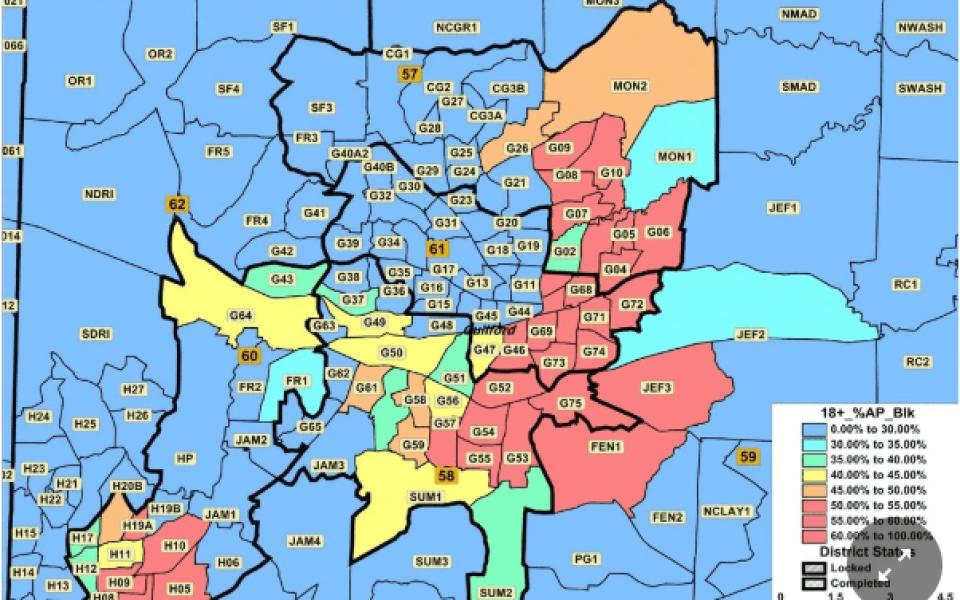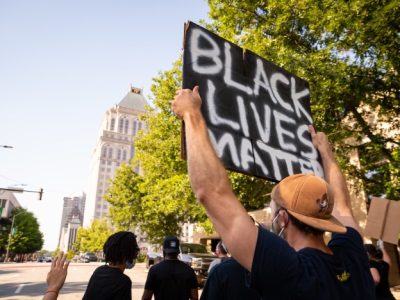On Sunday afternoon, at 2:15 p.m.,
with a single tweet, Stephanie Hofeller released a massive trove of documents
to the world, collected in six folders on a publicly accessible Google Drive.
The invitation for public review is not what you might expect from the daughter of Thomas Hofeller, the late Republican strategist who locked down GOP rule in North Carolina over the past decade, and helped the party rig electoral maps in at least a half-dozen other states.
“Check it out, download it, put it
on the wall, stomp on it, sacrifice it to the god of your choice, make art,
make noise, have fun!” wrote Stephanie Hofeller, an avowed anarchist who lives
in an apartment in Lexington, Ky.
In her “Initial Statement,” a little
more than a page long, Hofeller explains her purpose.
“What you’re observing here is my
effort to crowd-source The Hofeller Files,” she wrote. “That means that I don’t
by myself know exactly what We the People should do about our serious problem,
the government of our country. All I can say, for certain, is that what we’re
doing now does not seem to be working
very well.”
Hofeller, estranged from her father at the time of his death in 2018, has lived a tumultuous life, including experiencing domestic violence and losing custody of her children, as related in Melissa Boughton’s stunning profile for NC Policy Watch. Some of the files on her father’s computer address matters in her personal life. But Stephanie Hofeller said she’s sharing them for the same reason she handed them over to a law firm challenging the districting plans — that is, “to preserve the forensic integrity of the material (not just for legal, but for historical purposes).”
The files have already been scoured by journalists at a small number of publications, including the New York Times, the New Yorker and the Intercept, whose reporting deserves to be resurfaced.
The stories published by the Times and the New Yorker, in particular, show the disturbing degree to which
Thomas Hofeller focused with laser-like intensity on Greensboro. Both outlets
published a color-coded map found in Hofeller’s files that shows the share of
African-American residents in every precinct in the city.
Intriguingly, the map includes an
overlay of the state House district lines for a court-ordered plan imposed in
2018, the year he died. The courts agreed with plaintiffs that the map drawn by
Hofeller had been created to weaken the influence of black voters by packing
them into a limited number of state House and Senate districts.
The Greensboro map suggests that
even after the courts reproached Republican lawmakers for relying on race to
draw districts, Hofeller was still preoccupied with the distribution of black
voters in the new districts drawn by a court-appointed special master.
More disturbing is the granular analysis of the voting habits and residences of students at NC A&T University. The New Yorker called the congressional-district line that Hofeller drew through the center of campus “one of the clearest and ugliest gerrymanders in North Carolina — or in the entire nation.” (In a rare stroke of political justice, a court order forced the General Assembly to retire the map in November, and five Democratic candidates are currently battling to represent a new district that reunites Greensboro, while also covering High Point and Winston-Salem.)
The previous map had been created as
a transparently partisan gerrymander after the courts disallowed the one before
that as an unconstitutional racial gerrymander. But the files show that
Hofeller used race and other data points concerning A&T students to figure
out how to maximize Republican advantage.
As David Daley wrote in the New Yorker:
“A
spreadsheet named ‘NC College Voters for ZIP ID’ contains voter data for more
than 23,100 North Carolina university students, including thousands in
Greensboro. The detail for the North Carolina A&T students is precise:
students are sorted by residence hall. That means that Hofeller knew which
A&T students lived in Aggie Village, on the north side of campus, and which
resided in Morrow or Vanstory Halls, on the south side — along with a detailed
racial breakdown and information about their voting status. As Hofeller sought
to create two reliably Republican congressional districts, his computer contained
information on the precise voting tendencies of one of the largest
concentrations of black voters in the area.”
Daley
noted that another file identified 5,429 college students who lacked the
necessary ID required to cast a ballot at the time he drew the maps — that law
has also been struck down by the courts. If Hofeller had incorporated the data
into the configuration of the line through A&T campus, Daley wrote, he
could have drawn the map “with even greater specificity about who would and
would not be likely to vote.”
It’s fitting that US Rep. Mark
Walker, the Republican who currently represents the eastern portion of the
A&T campus, has been forced into political retirement. Voters didn’t elect
him; he — or at least a candidate from his party — was selected by Thomas
Hofeller.
Join the First Amendment Society, a membership that goes directly to funding TCB‘s newsroom.
We believe that reporting can save the world.
The TCB First Amendment Society recognizes the vital role of a free, unfettered press with a bundling of local experiences designed to build community, and unique engagements with our newsroom that will help you understand, and shape, local journalism’s critical role in uplifting the people in our cities.
All revenue goes directly into the newsroom as reporters’ salaries and freelance commissions.





Leave a Reply